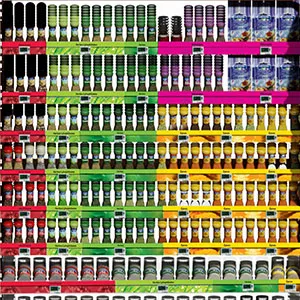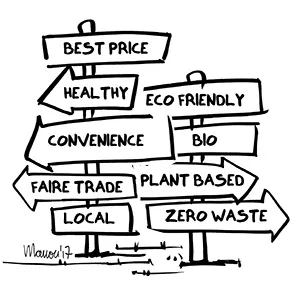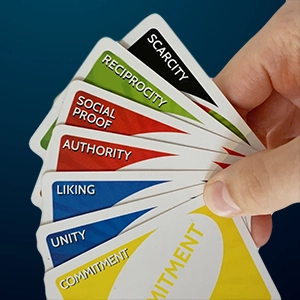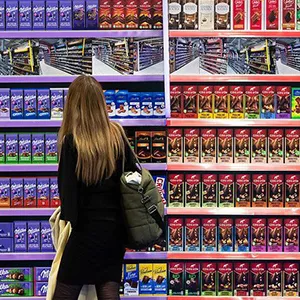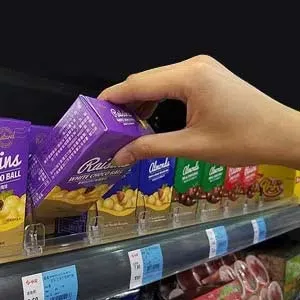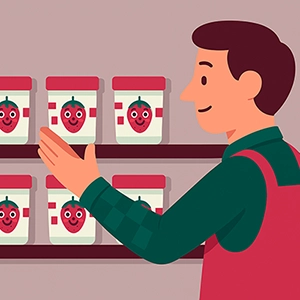Point-of-purchase Tips & Strategies: Retail merchandising for food, beverage & grocery brands
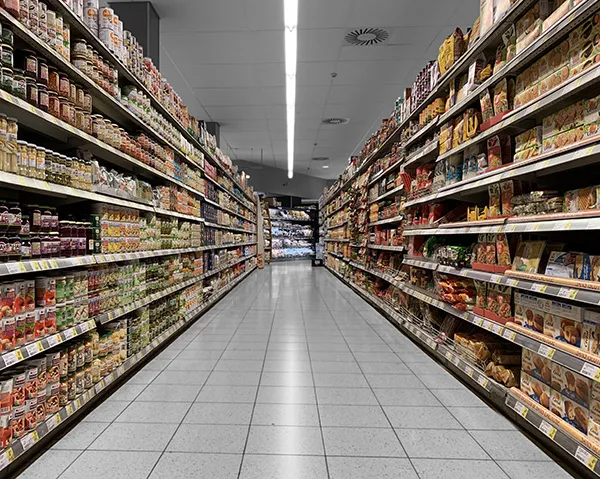
In hypermarkets, supermarkets, and convenience stores, food, beverage, and grocery manufacturers strive to sell their products under the most favorable conditions. Instore marketers have a variety of methods at their disposal to showcase their brands, boost sales, and influence buying intentions at the critical moment. The potential is significant, but how to make effective merchandising solutions for food, beverages, and groceries? Through demonstrations, tips, and tricks with examples.
1 100 words
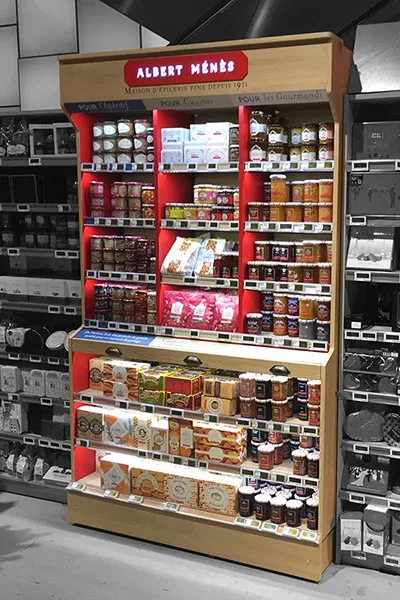
Merchandising materials often serve as the first connection between shoppers and products. They are a must-have for any brand that sells through physical retail. Manufacturers develop and provide these materials to their retail partners, who are frequently constrained by time.
Merchandising levers are a win-win for both brands and retailers. They make sales spaces dynamic and less predictable. Moreover, they lead to extra profits, primarily by encouraging spontaneous purchases or directing buying towards higher-margin products. At the same time, brands are provided with opportunities to make their offerings more noticeable. And that’s when the magic occurs: seeing is buying.
Freestanding, or autonomous, merchandising materials come with the advantage of 100% customization. The solutions are diverse, as well as the techniques and materials used. At Pilotes, we adapt them to match the aesthetic requirements of the brand and product, as well as the context and marketing goals.
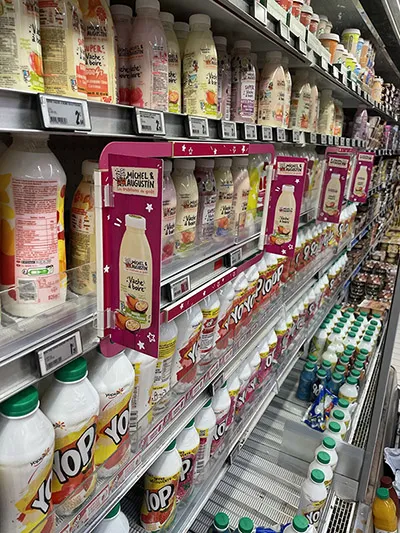
For many years, various players in the food industry have relied on us to design and make their merchandising and POP (point-of-purchase) solutions. With this experience, we are delighted to share some insights and lessons learned. Before moving on to specific cases, let’s first look at the objectives that merchandising can drive.
Pilotes specializes in the design of commercial furniture, display and merchandising solutions. We offer 100% customized point-of-purchase materials tailored to the in-store projects of brand and retail. Because we care about the climate and environment, we analyze the lifecycle of each project to avoid, reduce, and offset its impact 🌍🌿
Do you have a project planned? Contact us and let’s bring your vision to life together!
1. The sesame to mass distribution
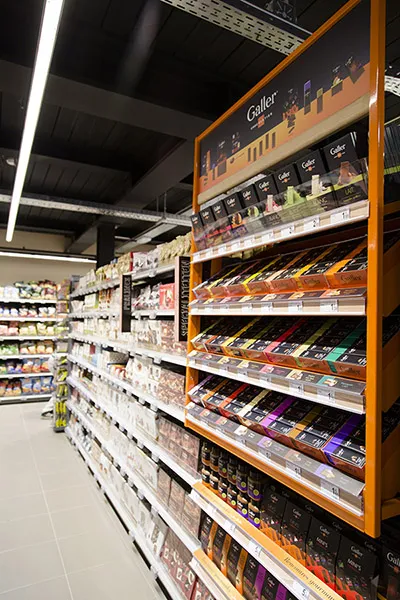
To secure a spot on store shelves, a genuine innovation in merchandising can be a successful strategy. Developing a unique and effective merchandising solution starts with a good discussion with retail buyers. By supporting their priorities, brands have a better chance of attracting more customers to their offer.
2. The speed bumps that slow down shoppers
To divert shoppers’ attention away from their usual choices, merchandising experts use remarkable display materials. And because shoppers’ attention is always focused on the offer, the display initiatives only set the scene. With their shapes, construction materials, colours, and imagery they create a unique visual experience.
The display should be large enough to get noticed, but never at the expense of other products. Striking the right balance between product, branding, and display presents a stiff challenge.
3. Make an offer easy to shop
Ensure that customers can confidently access the products. And if the display is used in a high-volume store, those designing the display ensure that it maintains a satisfactory appearance from Monday through Saturday without requiring frequent restocking.
Discover more > Store shelf enhancement materials explained.4. tempt prospects
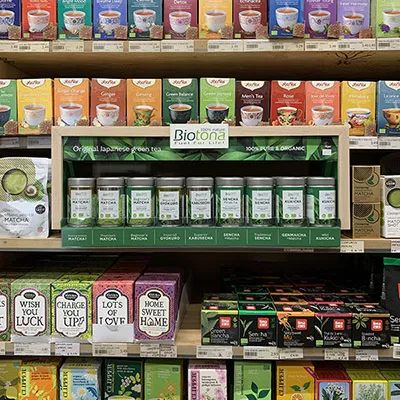
When aiming to increase penetration, or attract new shoppers to purchase a product, one possible strategy is to place the product outside its home shelf, by using for instance a floor-standing display unit.
The concept of second placement or dual location helps to attract prospects who have never seen the product before.
5. Sell more to visitors
To ensure the success of a merchandising effort, several criteria must be met. Firstly, the solution must be adapted to the context and location within the store. Additionally, it must correspond to the products on display, and the margin they generate — not all solutions are suitable for all types of stores, categories, or products.
If these criteria are met, merchandising can prompt store visitors to make more purchases by making the act of buying comfortable and easy:
- making it easier for them to find what they are looking for,
- improving shelf readability,
- showcasing novelties,
- stimulating spontaneous purchase behaviour,
- and guiding decision-making in self-service context.
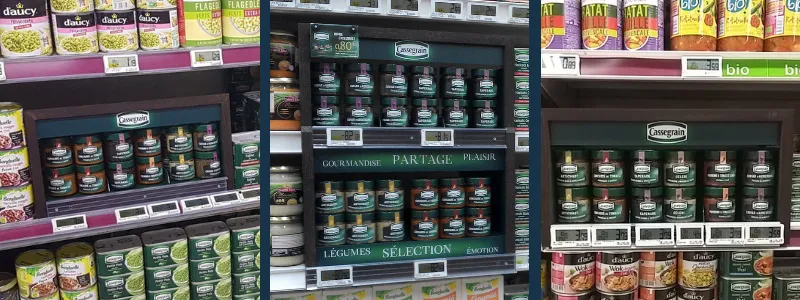
This on-shelf case for CASSEGRAIN comes with the promise of increasing sales for its new range of exquisite spreads. It creates a brand block and provides maximum product visibility for maximum impact.
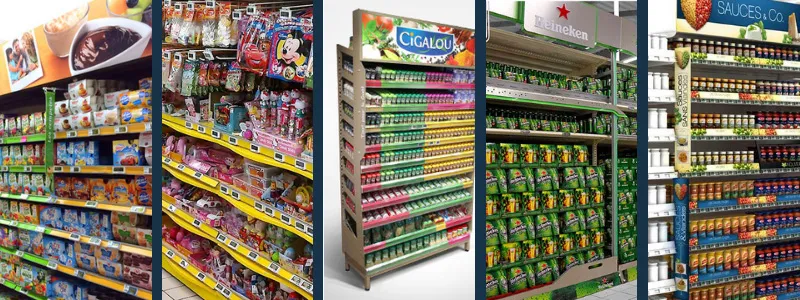
Shop-in-shops are among the most prominent merchandising materials. They add value to assortments, make the shelves more dynamic, and improve organization and layout.
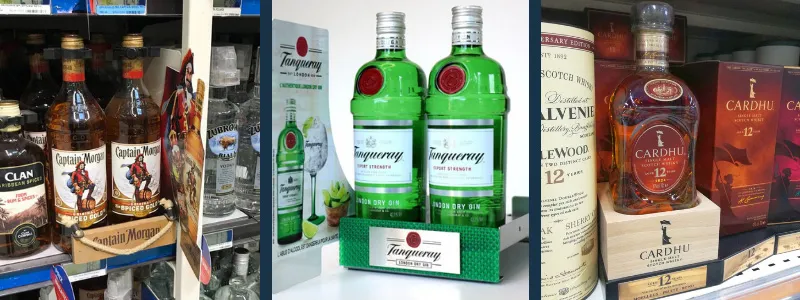
A shelf-stopper is the ultimate tool for achieving extra visibility on the shelves. It attracts the attention of passers-by, communicates novelties, segments the offer, and contributes to the overall attractiveness of the shelf.
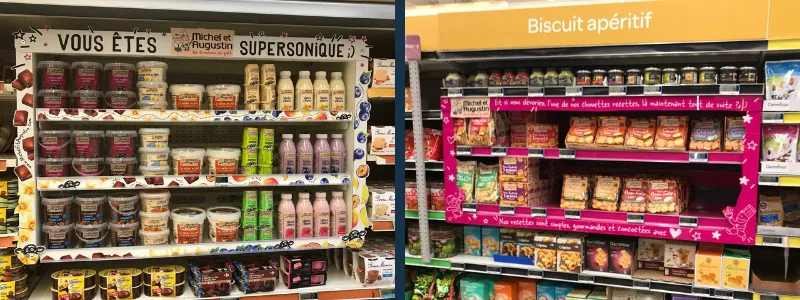
These dynamic on-shelf frames for MICHEL & AUGUSTIN are used in the fresh and grocery aisles of supermarkets.
While there isn’t a one-size-fits-all solution, there is one common principle: merchandising is directly tied to profitability. The direct and indirect potential of merchandising is significant. It optimizes presentation and enhances the attractiveness of offerings, thereby increasing their chances of capturing attention.
June 2022 — bh
Do you wish to develop your merchandising and boost your sales for your food, beverage, or grocery brand in retail? Reach out today to set up a free consultation. We'll find the best solution for your brand.
